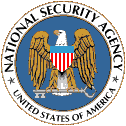
Cuban air defenses improved at an accelerating pace. In May, SIGINT reports had the first indication of airborne fire control radar on MIG-17and MIG-19 planes. Ground radar activity became heavier all over the island. By early summer, NSA analysts concluded that the Cubans were putting together an air defense system copied from the Soviet model. Equipment, training, and procedures were the same. In fact, by early fall NSA was listening to Russian ground controllers speaking in heavily accented Spanish to Cuban pilots.
Confronted with American concerns about this military buildup, several Soviet spokesmen, including the foreign minister, assured the U.S. government that the military equipment sent to Cuba was for defense only. Offensive weapons would not be introduced.
In August and September 1962, Soviet deliveries surged to the highest levels ever seen. In August, CIA analysts saw the first indications of an ominous new development, the construction of SA-2 surface-to-air missiles. These represented a new turn in the arming of Cuba -- such weapons could shoot American military aircraft out of the skies, including CIA's U-2 photographic reconnaissance planes. It had been an SA-2 that had shot down Francis Gary Powers's U-2 over the Soviet Union two years earlier.
SA-2s, moreover, were very expensive. Was the Soviet purpose to keep U.S. reconnaissance aircraft out of Cuba, and if so, why? John McCone, Director of Central Intelligence, came up with an answer that no one wanted to hear -- that SA-2s were on the island to deny the United States the capability to see the construction of offensive missile installations. Others in the defense and intelligence communities dissented from this opinion.
Human sources and photography could spot SA-2s, but signals intelligence would provide the first indicator of their operational status. On September 15, NSA reported the first operation of a Spoon Rest radar, associated with the SA-2. The SA-2 was operational, and could shoot down a U-2. Subsequent overflights would be at risk.
Other parts of the Cuban air defense system also matured in September. NSA reported that Cuban pilots, previously trained in Soviet Bloc countries, frequently went up to challenge American aircraft buzzing the periphery of the island. Cuban pilots practiced timed scrambles, and performed border patrols whenever American naval aircraft approached. Under the watchful eye of Russian GCI (Ground Controlled Intercept) controllers, their procedures became coordinated and efficient. With the new MIG fighters, using Soviet-originated ground control procedures and Soviet weapons, Cuban pilots were becoming a potent defensive force. With the antiaircraft weapons and surface-to-air missiles, American aircraft would approach Cuba at their peril.

On October 10, NSA reported that the Cuban air defense system seemed to be complete. They had just begun passing radar tracking from radar stations to higher headquarters and to defensive fighter bases using Soviet procedures. Their system, with Russians in advisory positions at every point, was ready for business. It was into this defensive thicket that a CIA U-2 flew four days later. Although it survived, on October 25 another U-2 was shot down.

At this point, on October 15 analysis of photographs taken on the U-2 flights revealed to the U.S. senior leadership that the Soviet Union was preparing sites to install SS-4s, medium-range ballistic missiles. DCI McCone, alone among the government's senior leaders, had been correct about Soviet intentions. President John F. Kennedy secretly convened a series of emergency meetings of his senior military, diplomatic, and political advisors, a grouping that became known as the Executive Committee, or ExCom, to seek ways of coping with this ominous development.
As the crisis progressed, and the ExCom considered a wide variety of diplomatic and military options, the need for information on Cuba and the Soviet Union increased. All members of the U.S. intelligence community responded splendidly.


![]()